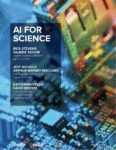“A research team from Rice University utilized three supercomputers (TACC’s Stampede 2, Wrangler, and Pittsburg Supercomputing Center’s Bridges system) to see if data on heat waves and cold spells could be predicted by analysis of atmospheric circulation and prior surface temperature. The results of these tests indicated that this deep learning approach is more accurate at predicting extreme weather.”
Podcast: How Community Collaboration Drives Compiler Technology at the LLVM Project
In this Let’s Talk Exascale podcast, Hal Finkel of Argonne National Laboratory describes how community collaboration is driving compiler infrastructure at the LLVM project. “LLVM is important to a wide swath of technology professionals. Contributions shaping its development have come from individuals, academia, DOE and other government entities, and industry, including some of the most prominent tech companies in the world, both inside and outside of the traditional high-performance computing space.”
Video: Next Generation AMD CPU and Accelerator Technologies
Bradley McCredie from AMD gave this talk at the Rice Oil & Gas Conference. “While foundries bravely drive forward to overcome the technical and economic challenges posed by scaling to 5nm and beyond, Moore’s law alone can provide only a fraction of the performance / watt and performance / dollar gains needed to satisfy the demands of today’s high performance computing and artificial intelligence applications. To close the gap, multiple strategies are required. First, new levels of innovation and design efficiency will supplement technology gains to continue to deliver meaningful improvements in SoC performance. Second, heterogenous compute architectures will create x-factor increases of performance efficiency for the most critical applications.”
Podcast: Slingshotting to Exascale
In this podcast, the Radio Free HPC team looks at the Cray Slingshot interconnect that will power all three of the first Exascale supercomputers in the US. “At the heart of this new interconnect is their innovative 64 port switch that provides a maximum of 200 Gb/s per port and can support Cray’s enhanced Ethernet along with standard Ethernet message passing. It also has advanced congestion control and quality of service modes that ensure that each job gets their right amount of bandwidth.”
Shedding New Light on Intelligent Investment Strategies for HPC
When it comes to successfully identifying the likely success of companies, and steering an effective investment strategy, there is one organization that appears to be well ahead of the pack. “The company is WR Hambrecht and the person guiding their analysis and decision-making process utilizing a proprietary software system he developed more than a decade ago is Thomas Thurston, Partner and Chief Technology Officer of WR Hambrecht Ventures.”
GPCNeT or GPCNoT?
In this special guest feature, Gilad Shainer from Mellanox Technologies writes that the new GPCNeT benchmark is actually a measure of relative performance under load rather than a measure of absolute performance. “When it comes to evaluating high-performance computing systems or interconnects, there are much better benchmarks available for use. Moreover, the ability to benchmark real workloads is obviously a better approach for determining system or interconnect performance and capabilities. The drawbacks of GPCNeT benchmarks can be much more than its benefits.”
Video: How oneAPI Is Revolutionizing Programming
In this video, academics and industry experts weigh in on the potential of oneAPI, the new, unified software programming model for CPU, GPU, AI, and FPGA accelerators that delivers high compute performance for emerging specialized workloads across diverse compute architectures.
Full-spectrum HPC Scheduling
Our friends over at Altair explain how a meta-scheduler, or hierarchical scheduler, can be thought of as a private or team-based scheduler that uses shared underlying resources. Difficult workloads and special workloads are good candidates for meta-scheduling. Examples include sets of several hundred thousand short jobs, jobs with complex dependencies, and workflows that are continually introspected for status.
Argonne Publishes AI for Science Report
Argonne National Lab has published a comprehensive AI for Science Report based on a series of Town Hall meetings held in 2019. Hosted by Argonne, Oak Ridge, and Berkeley National Laboratories, the four town hall meetings were attended by more than 1,000 U.S. scientists and engineers. The goal of the town hall series was to examine scientific opportunities in the areas of artificial intelligence (AI), Big Data, and high-performance computing (HPC) in the next decade, and to capture the big ideas, grand challenges, and next steps to realizing these opportunities.
How We Can Achieve Applied Science Innovation Through Big Compute?
Joris Poort from Rescale gave this talk at the Big Compute 2020 conference. “Now the challenge of big compute comes down to three major areas. The first is specialized hardware. Because of the nature of these problems, we have to be able to leverage the specialized nature of the hardware advances that we have to be able to solve these tightly coupled problems. The second is need to think differently about how we actually compute in the stack, how we align the algorithm to the infrastructure. And finally the third, perhaps the most important, we have to make this usable and democratize this capability to the world’s brightest minds and innovators.”












